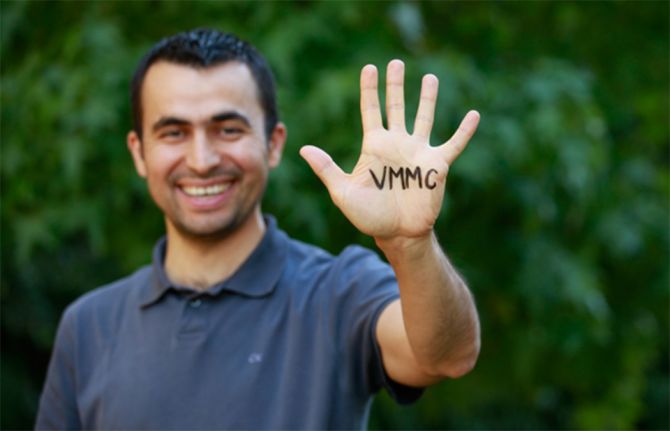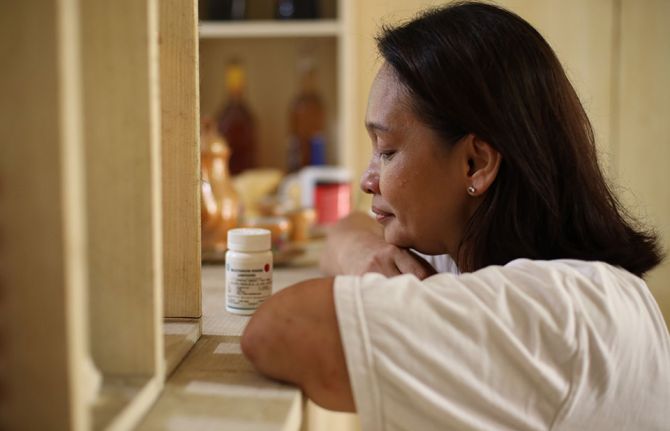

Feature Story
Voluntary medical male circumcision: a core campaign to reach the Fast-Track Targets
17 October 2016
17 October 2016 17 October 2016AIDS-related illnesses remain the single largest cause of years of life lost among adolescent boys and men of reproductive age in eastern and southern Africa, although few policies and programmes focus on HIV services for men and boys or on improving their access to health care. However, one type of programme, voluntary medical male circumcision (VMMC), stands out, as it has had reached men and boys in large numbers and is 60% effective in preventing against female-to-male transmission of HIV.
In 2007, the powerful evidence of the preventive impact of VMMC led the World Health Organization (WHO) and UNAIDS to recommend VMMC, particularly in high-burden countries with a low prevalence of male circumcision. They urged the scale-up of voluntary medical male circumcision in 14 countries—Botswana, Ethiopia, Kenya, Lesotho, Malawi, Mozambique, Namibia, Rwanda, South Africa, Swaziland, the United Republic of Tanzania, Uganda, Zambia and Zimbabwe—guided by the actions of ministries of health and other stakeholders.
The highly aspirational target set was to provide VMMC services to more than 20 million men by the end of 2016 in the priority countries. By the end of 2015, 11.7 million adolescent boys and men had been circumcised, and by the end of 2016 that number is projected to reach 14 million, a huge success by any measure. Some countries are attaining and surpassing targets. In 2015, the Gambella province in Ethiopia, Kenya and the United Republic of Tanzania all exceeded their targets set in 2011.
Today, governments and partners, such as UNAIDS, WHO and the United States President’s Emergency Plan for AIDS Relief, are focused on continuing to scale up and maintain this successful programme, but there is cause for concern. Following years of rapid increase, the annual number of circumcisions performed within eight of the 14 priority countries stayed level or decreased in 2015.
There is guidance, however, for a way forward. A new WHO and UNAIDS report, Effective HIV prevention and a gateway to improved adolescent boys’ & men’s health in eastern and southern Africa by 2021, describes the new strategic directions for the years to come. In order to reach the Fast-Track Targets, the annual number of VMMCs needs to increase to 5 million per year. At the same time, a comprehensive people-centred approach to service delivery for men and boys needs to be adopted at the country level, with tailored services to be offered to individuals in different age groups and with different risk profiles.
The report lists the following as the key elements that all stakeholders are encouraged to work together to achieve:
- Promoting VMMC as part of a wider package of sexual and reproductive services for men and boys, including comprehensive sexuality education, the use of condoms and communication around gender norms, including positive notions of masculinity.
- Using new integrated service delivery models.
- Using approaches that are tailored for various age groups and locations.
- Increasing domestic funding to ensure the sustainability of VMMV and expanding sexual and reproductive health services for men and boys.
- Developing new approaches for adolescent and early infant circumcision.
- Breaking down myths and misconceptions about circumcision.
The Clearinghouse on Male Circumcision for HIV Prevention is a collaborative effort among partners, including UNAIDS, for sharing information and resources with the international public health community. The resource library has more than 900 entries and can be searched by topic or country.
“Voluntary medical male circumcision provides a much needed entry point for reaching men and boys with other HIV prevention and health services, which would in turn benefit women and girls,” said UNAIDS Executive Director, Michel Sidibé. “We cannot reach our goals without it,” he added.



